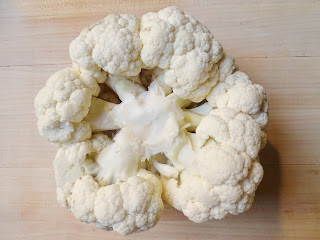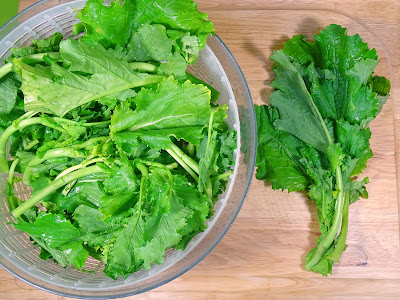The big day is almost here, and the Kitchen Goddess wants to once again take an opportunity to tell you how thankful she is that you stop by now and then. Writers need readers, just as cooks need eaters. But the reading part is much less obligatory, so I truly appreciate the time you spend here at Spoon & Ink.
And now, what you’ve all been waiting for: the carbs. Did you know that the first potatoes were found in southern Peru and northwestern Bolivia, some 7000-10,000 years ago? Me neither. Today, it’s the world’s fourth largest food crop, following maize, wheat, and rice. Ah, I love Wikipedia.
These potatoes, on the other hand, came not from South America but from Cook’s Country, an offshoot of America’s Test Kitchen. While I generally find their approach to cooking to be a bit tedious, I thought the idea of these individualized au gratin “cups” was very clever indeed. And not surprisingly, the taste is quite good. It’s hard to really screw up a potato-cheese combo, but there’s a lot to be said for getting one that doesn’t stick to the pan yet maintains that creaminess you can’t usually get without a big, goopy casserole and a whole lot of butter.
My potato cups didn’t get as brown and crispy as the Cook’s Country version, but perhaps with a thicker coating on the muffin tin, or perhaps more time in the oven... The Kitchen Goddess was a bit pressed for time and needed to get this post finished. But she was gratified to notice that at least one other blogger who posted this recipe had even paler results.
The only other warning I will offer is that you find a casserole dish larger than the 1½-quart Pyrex dish I used for microwaving the potatoes with the half-and-half. I figured I just needed a dish that would hold the mixture. But it turns out that when you microwave cream continuously for a long time – 13-15 minutes – it boils furiously at some point and will make an unholy mess in your microwave when it boils over, even with a lid on the dish. The Kitchen Goddess felt vexed and humiliated. Grrrr...
Now, that unhappy part of the experience will not keep me from making these cups again. As I said, the taste is very good, and the convenience factor on serving them is outstanding. But next time, I’ll use a larger dish and stop the cooking every 3-4 minutes to stir the mixture down. It might take a bit more time in the microwave, but I won’t mind that. The Kitchen Goddess doesn’t like being vexed.
Kitchen Goddess notes: I know, most of this post seems like one long note, but this is about the choice of ingredients. So listen up.
(1) You want a potato that keeps its shape on the outside but cooks up dry and fluffy on the inside. Russets are ideal.
(2) Do not use pre-shredded cheese for this recipe. Or any other recipe, for that matter. Bagged cheese has additives – like potato starch, cellulose (wood pulp!) powder, and calcium sulfate – to keep it from clumping. The Kitchen Goddess cooks with pure cheese, and hopes you will do likewise.
(3) Grated Parmesan is a salty cheese-flavored substance that comes in cans, and also contains wood pulp. This recipe calls for grated Parmigiano-Reggiano, one of the world’s truly great cheeses. So buy some and grate it yourself. Or your grocer might grate it on site and sell it in plastic containers, and that’s ok, too.
So enough of the preachy stuff and on to the food. And have a glorious Thanksgiving!
Cheesy Scalloped Potato Cups
Adapted from Cook’s Country.Serves 12.
Special equipment: non-stick muffin tin, and a microwaveable dish that holds at least 2 quarts
Ingredients
½ cup Panko bread crumbs
1 tablespoon unsalted butter, softened
2 pounds russet potatoes, peeled
1¼ cups half and half
1¼ teaspoon salt
¾ teaspoon freshly ground black pepper
5½ ounces (about 1⅓ cups) shredded sharp cheddar (Feel free to mix it up with this cheese – I used 4 ounces Welch cheddar and 1½ ounces Gloucester, and it was divine.)
1¼ ounces (about ⅔ cup) grated Parmigiano-Reggiano
2 teaspoons cornstarch
PAM, or other cooking oil spray
Directions
Preheat oven to 425º. Set a rack at the lowest position in the oven.
In the bowl of your food processor, pulse the Panko crumbs 4-5 times, to get a fine consistency.
Grease the muffin cups well with the butter, covering the sides and bottoms evenly. (A pastry brush works well.) Coat the cups with the ground Panko.
 Slice the potatoes in half lengthwise. At this point, the Cook’s people would have you cut each half into thirds and then cut crosswise in ¼-inch slices, per the photo here. That’s all fine, but in my humble opinion, it is a bit precious. I think you could cut straight down in a grid, to get pieces that are still ¼-inch thick but closer to square shapes, which would be easier. It’s the ¼-inch thickness that’s important, for consistent doneness.
Slice the potatoes in half lengthwise. At this point, the Cook’s people would have you cut each half into thirds and then cut crosswise in ¼-inch slices, per the photo here. That’s all fine, but in my humble opinion, it is a bit precious. I think you could cut straight down in a grid, to get pieces that are still ¼-inch thick but closer to square shapes, which would be easier. It’s the ¼-inch thickness that’s important, for consistent doneness. Combine the potatoes, half-and-half, salt, and pepper in a large, microwaveable bowl (covered), for 15 minutes, stopping every 3-4 minutes to gently stir the mixture and keep the cream from boiling over. If the potatoes are not tender after 15 minutes, run the mixture another 2-3 minutes.
Combine the potatoes, half-and-half, salt, and pepper in a large, microwaveable bowl (covered), for 15 minutes, stopping every 3-4 minutes to gently stir the mixture and keep the cream from boiling over. If the potatoes are not tender after 15 minutes, run the mixture another 2-3 minutes.While the potato-cream is cooking, stir together the cheeses and cornstarch in a bowl, and reserve ⅓ cup of the mix.
When the potatoes are tender, stir the cheeses into the potato-cream mixture until smooth. Spoon the mix into the muffin cups and top with the reserved ⅓ cup of cheese.
Cover the muffin tin with a sheet of aluminum foil that has been sprayed with cooking oil. Place the covered tin into the oven on the lowest rack, and bake at 425º for 10 minutes. Remove the foil and continue to bake for 13-15 minutes, or until golden brown.
Set the muffin tin on a rack and loosen the sides of the potato cups using a paring knife or icing spatula. Allow the cups to cool in the tin for 5 minutes. To remove the cups, place a rimmed baking sheet over the tin and invert the two. Tap the bottoms of the tin to release the cups. Let the cups cool 5 minutes on a wire rack before serving.





































